Ohio Redistricting Commission releases draft maps for Franklin, Hamilton county districts. See them here

The Ohio Redistricting Commission kicked off piecemeal negotiations over new state House and Senate maps Thursday by debating how lines should be drawn in two key Democratic areas: Franklin and Hamilton counties.
GOP and Democratic counterproposals for the two counties demonstrated how small differences could add up to different results, especially when extrapolated to a statewide map. For example, commission members couldn't agree on whether Hamilton County should have two Democratic Senate seats and one Republican one or vice versa.
The Ohio Supreme Court ordered the seven-member commission to draw maps that attempted to match the statewide voting preferences of Ohioans, which amounted to 54% preferring Republican candidates and 46% preferring Democrats over the past decade.
That means creating several more Democratic-leaning districts than the maps the Ohio Supreme Court rejected, which could have given Republicans a 62-37 advantage in the House and 23-10 advantage in the Ohio Senate.
Republican legislative leaders said their new maps would net Democrats two House seats – one each in Hamilton and Franklin counties – and one Senate seat in Franklin County compared to the rejected maps. The Democratic proposal for those counties appeared to net two House and two Senate seats for Democrats.
The commission did not come to a final decision on districts for those counties and will meet Friday morning to tackle other parts of the state.
In addition to hitting voter preferences, mapmakers also have to abide by other voter-approved changes to the Ohio Constitution that minimized splits and kept districts compact. Republican and Democratic mapmakers met several times this week to craft a solution.
However, it's not clear whether mapmakers are all working toward the same goal.
"Not having certainty about that goal, whether we are going to achieve that proportionality or not, causes a lot of consternation and unnecessary levels of back-and-forth that preclude us from talking to the next region because we're still arguing about the current region as if it's a life-and-death matter," said Chris Glassburn, the Democrats' map contractor.
Speaker Bob Cupp, R-Lima, told reporters that if staff weren't on the same page, there must have been some miscommunication: "The directions to our staff have been to draw district maps that fully comply with the constitutional requirements."
Franklin County
GOP and Democratic proposals for Franklin counties included some similar elements. They included:
Both maps keep a GOP House district that extended from Dublin into Union County. That would be the only safe Republican seat on both maps.
Several House districts in northern Franklin County are practically identical.
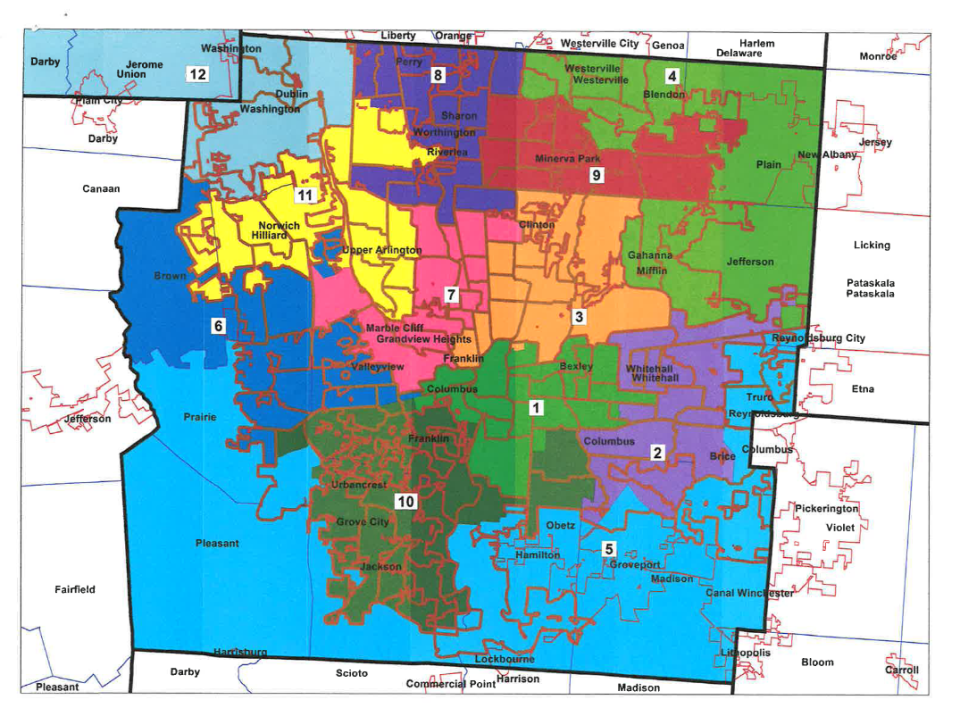
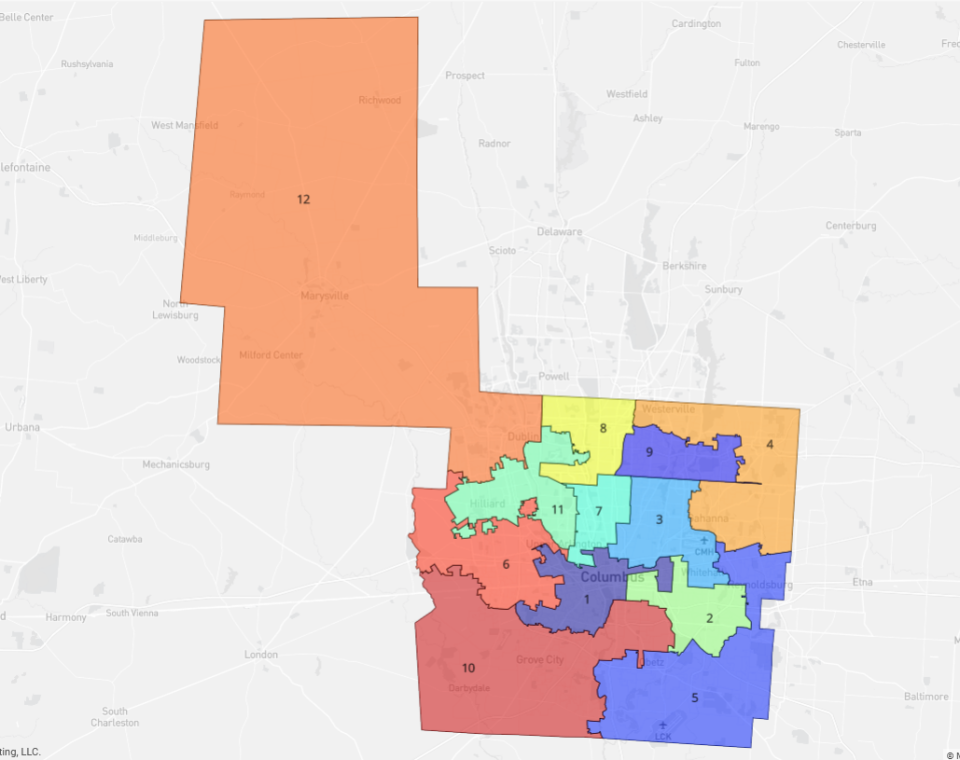
However, there were several differences.
How a Senate district for southern Franklin County was drawn: The GOP would extend the district from southern Franklin County to its eastern border and up to Westerville. That creates a highly competitive toss-up district. Democrats, however, want to keep that Senate district in the southern half of the county, creating another district that extends like a U from Gahanna to Clintonville. Both districts would favor Democrats.
How a House district is drawn containing Clintonville: The GOP draft proposes looping it around Upper Arlington and into Marble Cliff toward Hilliard. The Democrats' proposal is more compact.
How southern Franklin County's House districts are drawn: The GOP proposal creates two highly competitive House districts, one centered on Grove City, and another extending across the southern border. The Democrats split southwest and southeast Franklin County, creating one competitive and one Democratic seat, respectively.
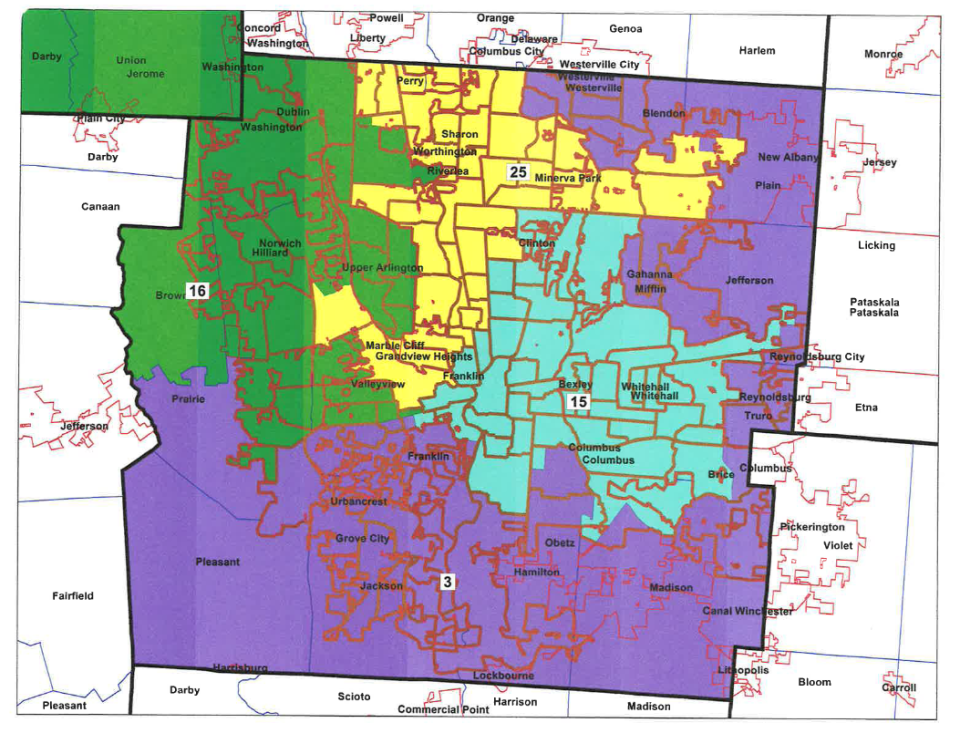
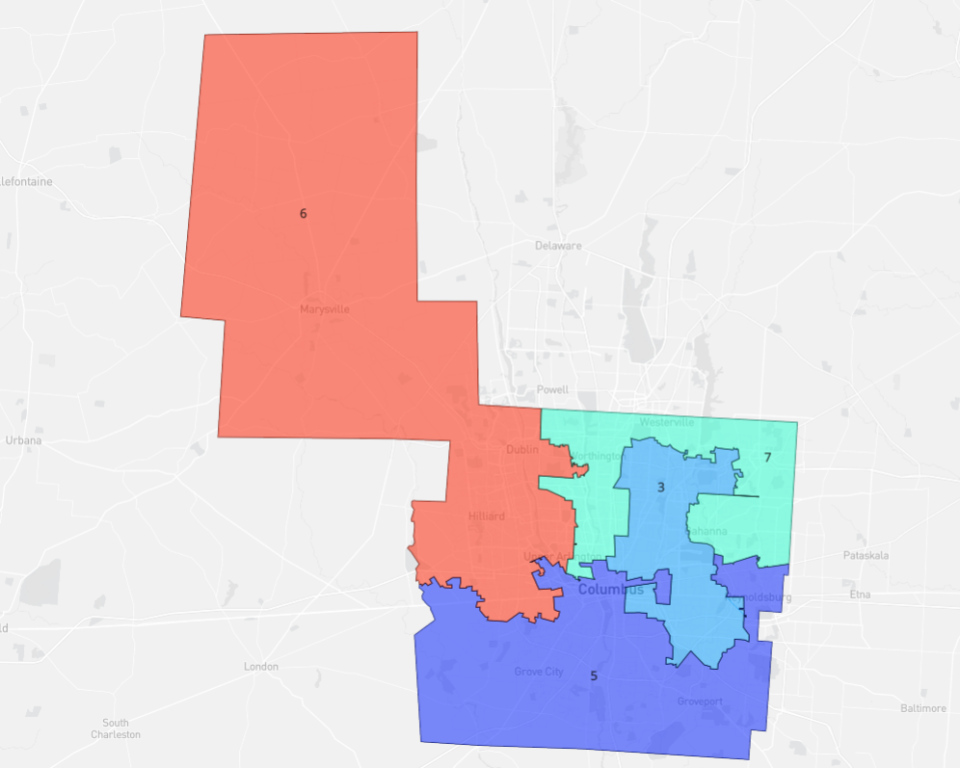
Hamilton County
In Hamilton County, Republicans would cede one House seat to Democrats. Here are some of the maps' similarities:
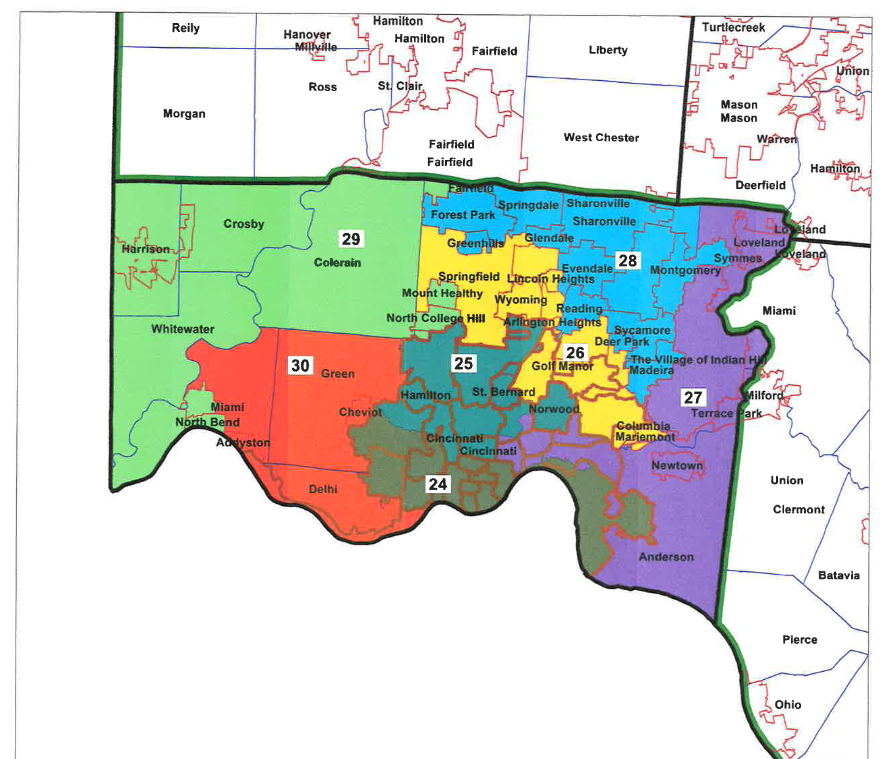
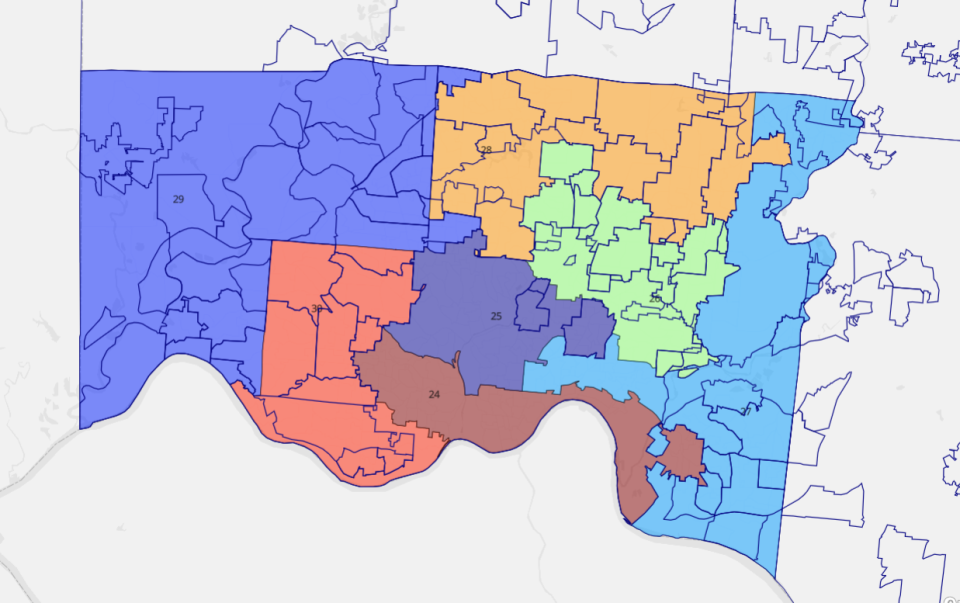
Both proposals return Forest Park to a more Democratic-leaning district. That's where Rep. Jessica Miranda lives and the rejected maps would have forced her to compete with GOP Rep. Cindy Abrams, of Harrison.
Both maps create a competitive, Democratic-leaning eastern Hamilton County. Rep. Tom Brinkman, R-Mount Lookout, is term-limited and the politics of that area have shifted.
Both drafts keep two winnable districts for Republicans in western Hamilton County.
But the maps diverge on a key point: Democrats would give their party two Senate seats while the GOP would prefer to keep the balance 2-1 in their favor.
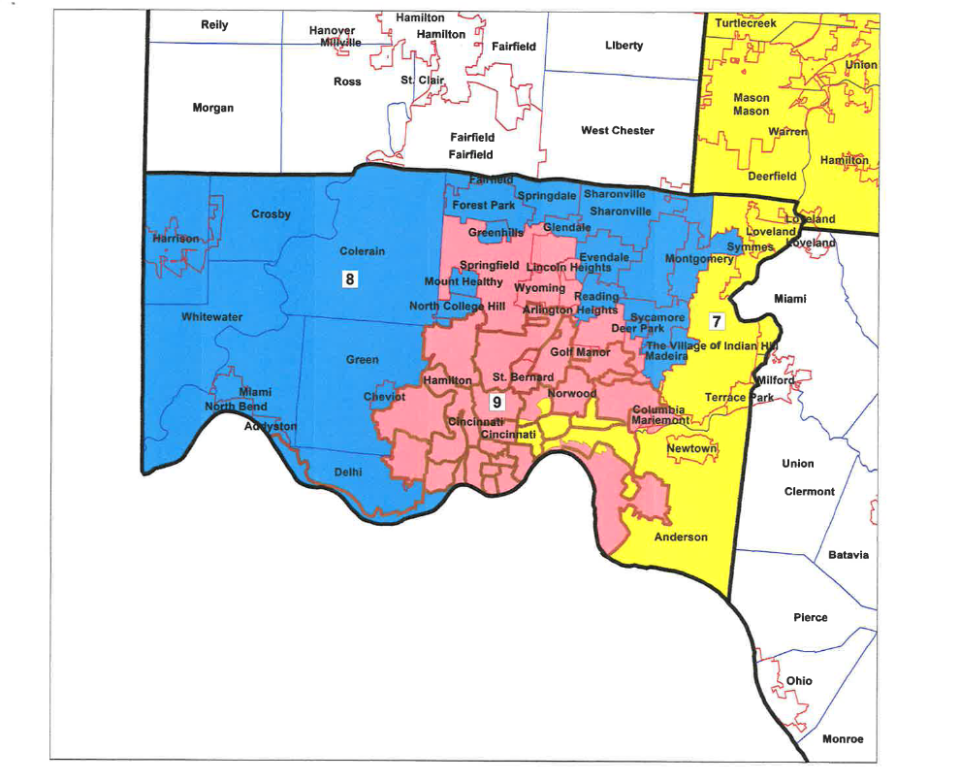
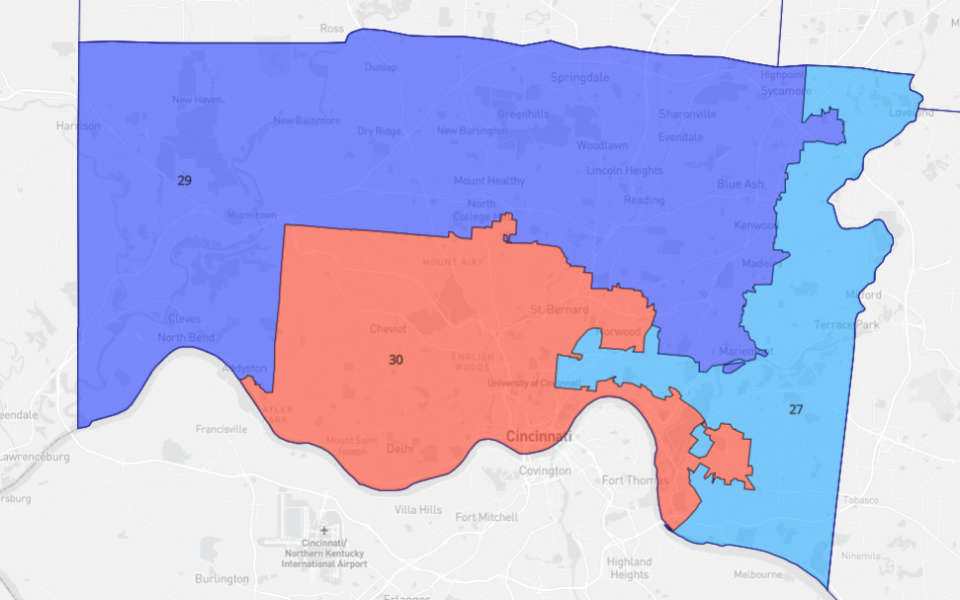
Glassburn said it would be difficult to reach the goal of a 18-15 Senate map without picking up another Democratic Senate seat in Hamilton County. Negotiations continue.
Getting to the finish line
Meanwhile, those who sued over the rejected maps introduced some of their own. The proposal from the lawsuits' plaintiffs would give Republicans a 57-42 or 56-43 advantage in the House, depending on the election data reviewed, and an 18-15 advantage in the Senate. That's shy of a perfectly proportional map in the House.
"Our goal, ultimately, was to show how you could comply with all the pieces of the Constitution and get close to that proportionality," said Jen Miller, executive director of the League of Women Voters of Ohio.
Miller said she liked the mapmakers' approach of tackling the map region by region, but local leaders and experts weren't given enough notice to weigh in Thursday.
"I think a regional approach makes a lot of sense, but it only makes sense to the extent that the people who know those regions are able to give comment," Miller said.
For the maps to last 10 years, four members of the Ohio Redistricting Commission, including both Democrats, must approve the final version. If the maps are passed without bipartisan support, they would last four years and mapmakers would have to explain their line-drawing decisions.
The commission's deadline is end of da Saturday. After that, those who sued over the last maps will have three days to point out any potential problems. The Ohio Supreme Court could then approve or invalidate the maps, again.
More: Ohio redistricting: Mapmakers must draw more Democratic seats. Where might they find them?
Meanwhile, deadlines are approaching for the May 3 primary. Candidates must file paperwork to run by Feb. 2. Ohio Secretary of State Frank LaRose has already asked lawmakers for some leeway with administrative deadlines for the 2022 primary.
"This is the first time, I believe in the history of the state, that Republican and Democrat staff have been working together on maps," said commission co-chairman Sen. Vern Sykes, D-Akron. "This is a Hercules task, but I think that we're up to trying to make sure that we comply with the court order."
Jessie Balmert is a reporter for the USA TODAY Network Ohio Bureau, which serves the Akron Beacon Journal, Cincinnati Enquirer, Columbus Dispatch and 18 other affiliated news organizations across Ohio.
Get more political analysis by listening to the Ohio Politics Explained podcast
8505809002
- Embed
- Not set
- GM 2 OH
- Not set
- 10/18/21 9:32:54 AM
- Not embargoed
embed:
Return to Asset Tab
SEO Warning
Layout Priority
This article originally appeared on The Columbus Dispatch: Ohio Redistricting Commission unveils new state House and Senate maps

